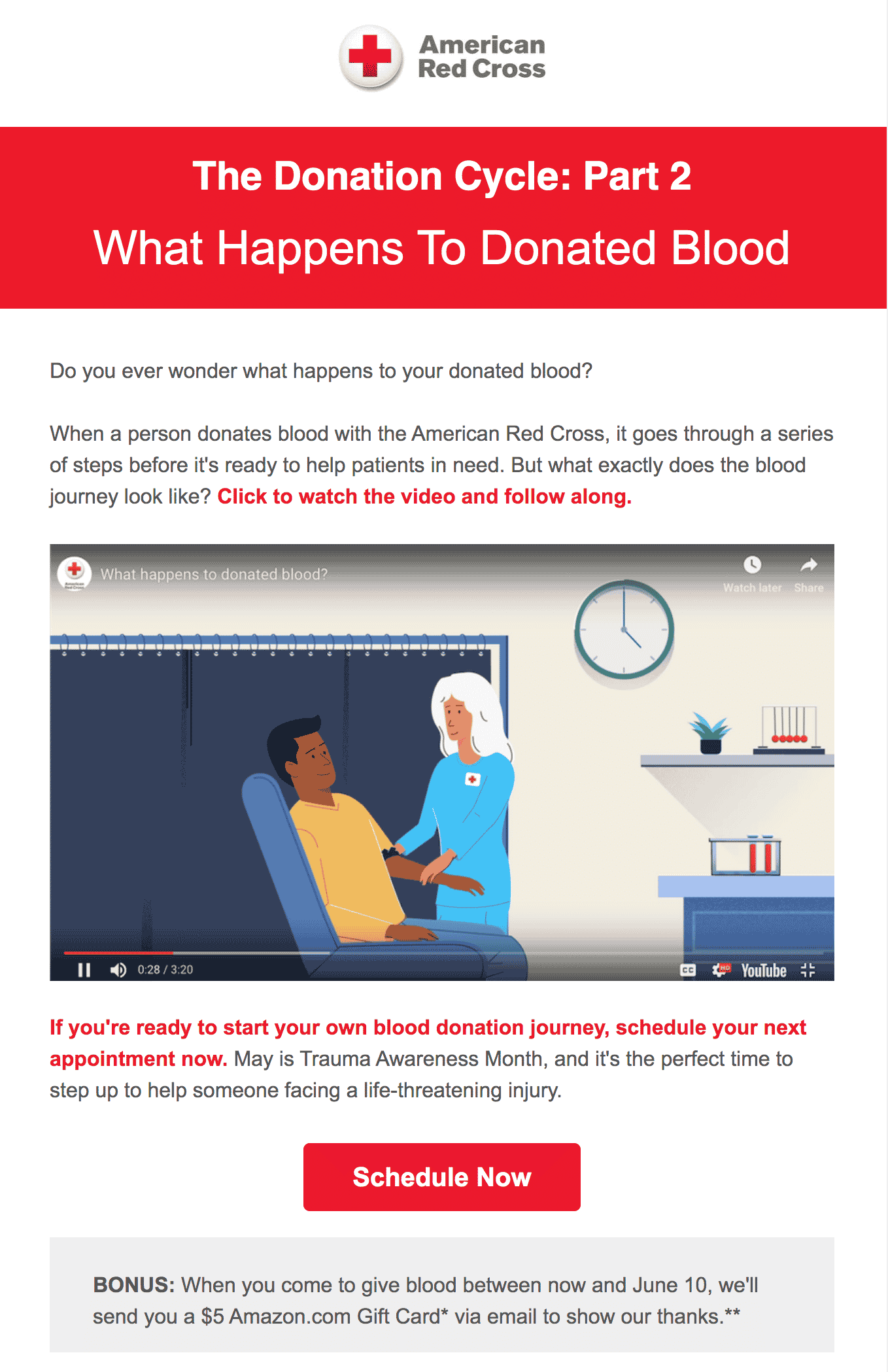4 Steps To Telling Your Nonprofit’s Story Through Email

While the last few months of the year bring festive events and holiday cheer, they can also bring added stress to nonprofits aiming to meet their annual fundraising goals. Before you ditch family gatherings and annual traditions in the name of number crunching and last-minute strategies, take a deep breath—it may not be as difficult as you think, especially if email is part of your strategy.
When you’re facing hard deadlines and donation goals, it’s easy to become overwhelmed with new tactics and things you “should” be implementing to become successful. But, take it from us, you already have what it takes to meet your goals and have another successful year; you just may need to change how you’re framing your message.
The Nonprofit Advantage
Don’t tell the other industries, but when it comes to marketing, nonprofits already have a head start because they usually don’t have to look too far to find a good story. Every nonprofit begins with a story, and yet, something happens when we’re asked to write digital marketing copy or create a new campaign that causes us to question our communication instincts.
Naturally, the most compelling communication tool available to nonprofits is storytelling, and that’s exactly where your strategy should begin.
Whether you feel like you already have a grasp of your nonprofit’s story or you’re exploring it for the first time, go through the following steps to really focus on your message.
1. Focus On Your “Why”
Your organization probably has a mission statement that formally states who you are and what you do, and it would be easy to identify that as your “why” and move on to sending emails. But give yourselves a little more credit—your “why” is much more than that!
Approach this like you would coffee with a new friend. Why are you personally excited about the work you get to do? What about your organization’s mission keeps you showing up for work every day? What was the initial problem that your organization set out to solve?
As you think about your own connection to your work and the people and causes that benefit from your organization, think about how you can harness your own enthusiasm and use it to get others on board with the same mission.
This email from charity: water is one of our favorites because it uses really great storytelling through powerful images, important statistics, and compelling copy. The “seven years in the making” line creates a sense of purpose, and It also shows that charity: water has a long-term plan for where donors’ money will be going.

Image: Really Good Emails
2. Know Who You Are Talking To
You probably know generally who your audience is and who’s on your list of subscribers, but have you considered what their expectations are when it comes to your sends?
Once you have laid the foundation of your company’s “why,” you can begin to connect the dots between that and your donors’ “why.” Why are they passionate about your cause? Why did they sign up for your emails? Get as much information as you can about your subscribers when they opt in, as well as through surveys and A/B testing.
When you have an idea of who you’re talking to and why they want to hear from you, creating content suddenly becomes much easier.
This is where segmentation is key. Not everyone will fit in the same bucket, since not all your subscribers or donors have the same reason for getting involved with your nonprofit. So what does this look like?
Instead of thinking of the people on your list as potential or past donors, remember that they’re real humans seeking connection. Their end goal isn’t a donation, so you can’t expect them to arrive at that decision without first connecting with them on a human level and meeting them where they are.
3. Communicate Impact
One of the biggest reasons people don’t make donations to nonprofits is because they don’t believe they have the ability to make a true difference. When such large issues are at hand, it can be difficult to believe that even a small donation will help a particular nonprofit or cause, but, as you know, small donations can add up to a lot!
The key is to make sure you’re showing that impact is within reach of every donor, from those who contribute $5 to $5,000,000. And it’s worth mentioning that there are plenty of other ways to give other than financially. Make sure to communicate the ways that a volunteer’s time and talents can make just as much of an impact!
Patagonia Action Works does a great job of showing the ways community volunteers make a difference:

Image: Really Good Emails
4. Stay In Touch
One of the biggest mistakes nonprofit organizations can make is not sending emails after a donation has been made. And yet, reaching out to your audience when you’re only soliciting donations—and not providing value to them—is an easy way to ruin a relationship. After all, no one likes to feel like they’re occasionally needed.
Send subscribers updates on how their donations are making an impact for the cause they love. A great way to do this is to send out a newsletter regularly. While you may continue asking for donations in the newsletter, make the bulk of the message informational. Doing this will spur your donors into action whenever you need their support. You’ll prove your sincerity by being accountable to them.
The American Red Cross does an incredible job of telling blood donors what happens next:

Make sure you thank donors for their support after a donation, but also stay in touch and maintain the relationship long-term.
Apply These Steps On Giving Tuesday
Giving Tuesday, held on the first Tuesday after Thanksgiving, was first introduced in 2012 to round out marketing holidays Black Friday, Small Business Saturday, and Cyber Monday. When carried out intentionally, this can be one of the biggest days of the year for nonprofits.
“But every other nonprofit will be sending emails on Giving Tuesday,” you might be saying. “How can I stand out from the crowd?”
There’s no different formula for Giving Tuesday, and our best pieces of advice remain the same—focus on your “why,” know your audience, communicate impact, and stay in touch. Remember: It’s all about human connection. Tell your organization’s story with the intention of connecting with your subscribers, and you’ll never go wrong.
Happy sending!
Learn more about telling your nonprofit’s story with Kindful’s donor communication and email marketing tools.
Schedule a live demo with Bloomerang, and we’ll show you how easy it is to create and automate reports, utilize online and offline fundraising tools, quickly integrate and access all your data, and ultimately create more time to engage your donors.